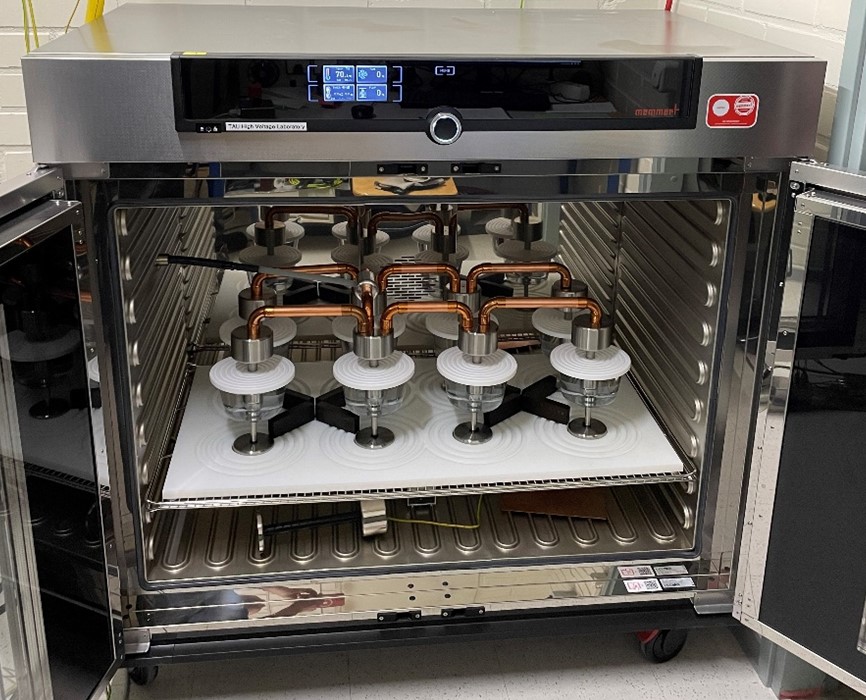Newsletter/Blog post
Work Package 4
Kari Lahti, Tampere University
Background
One of the key specific objectives in the NEWGEN project is to develop and demonstrate novel chemical additives for mitigating space charge accumulation in next-generation PP-based thermoplastic and conventional DC-XLPE insulation materials for HVDC cables. Development of these additives and processing of the novel materials is done under WP1, as well as the characterization of them. Power cables are examples of long-lifetime products for which lifetimes in the range of 40 years need to be ensured. Testing the long-term performance of developed materials is thus of great importance. In the material development phase, the long-term performance is tested utilizing the so-called Accelerated Life Tests (ALTs), from which the test results are then fitted on either general life models or on more sophisticated models developed under WP4 of NEWGEN.
Accelerated life testing environment at Tampere University
ALT testing of the most promising insulation materials is carried out in NEWGEN project both at SuperGrid Institute and at Tampere University, allowing parallel analysis of the test results gathered at different test environments. TAU’s ALT test environment is designed and developed under the NEWGEN project for testing flat insulation material samples at elevated temperatures and field strengths to accelerate the ageing of the insulation samples. In the testing suitable number of parallel samples (e.g. 5 – 10) are tested at each selected test condition until failure of the samples, enabling thus data of the material lifetime as a function of stress parameters.
Each flat insulation material sample is placed in an oil insulated sample holder (Figure 1) between IEC 60243 compliant cylindrical, Ø=25 mm electrodes. The testing environment comprises of four test ovens, each capable of taking up to eight sample holders in. Three separate 100 kVDC voltage sources are energizing the ovens and the environment is thus able to utilize four different temperatures and three different test voltages at the same time for a total of 32 samples. Test control software was also developed to ensure automatic sample failure detection, test duration measurements and careful test and personnel safety functions. Each oven is equipped with automatic fire extinguishing system and the test rooms with fire alarm system, which automatically shuts down the tests in case of fire.
An implicit feature of an ALT test setup is that the highly enhanced tests conditions do not cause any extra stress on the samples, which are not present in the normal service conditions. TAU test environment and the sample holders are designed and verified for Um=80 kV test voltage. Fully partial discharge free operation is verified up to 300 kV/mm sample field strengths, but also higher fields can be utilized with separate considerations and arrangements.
A couple of full ALT test series have so far been made with the setup. The results have shown expected material behavior, no technical problems and no notable development needs have been observed in the ALT setup. Reliable long-term performance of HVDC cables is one of the most crucial cable properties. ALT testing together with the related ageing modelling are used to verify the needed performance and this is one of the clear focus points of the NEWGEN project during the last section of the project. ALT test results of the most promising project materials will soon be published in the upcoming conference and journal papers.

